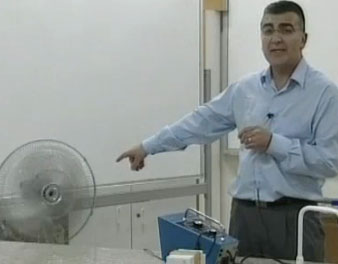This module is about a particular effect of the frequency, which is the stroboscopic effect. The lesson discusses and demonstrates low frequency phenomena - less than 16 Hz - that can usually be observed clearly by the human eye, as well as high frequency phenomena - more than 25 Hz - that are difficult for the human eye to catch. This video also explores and demonstrates how high frequency phenomena can be observed by freezing the fast moving phenomena using a device called a stroboscope. The only prerequisite for this video is that students understand the definition of the frequency of a periodic phenomenon. The video segments take up 17 minutes, so the total length of the lesson would depend on the amount of time spent during the in-class breaks. This lesson could certainly be completed during a 50-60-minute class period. Materials needed for this lesson include: a piece of paper or cardboard; a pen or a pencil; adhesive tape; a toothpick or a small stick; and a notebook with blank pages. (If available: a function generator, an AC power supply, connecting wires, a LED, a small lamp, a fan or ventilator (with blades), a flashing stroboscope) Examples of in-class activities between segments include discussions of frequency phenomena and the building of simple devices that demonstrate those phenomena.

